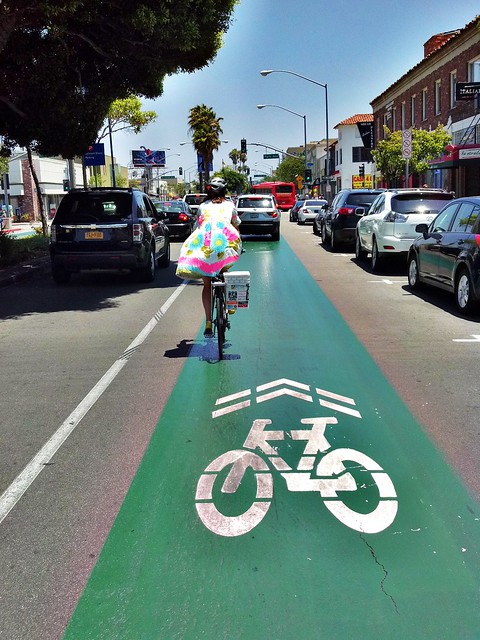At an event last week for traffic and transportation engineers hosted by the Congress for the New Urbanism, I had the chance to talk to Rock Miller, who served as president of the Institute of Transportation Engineers last year. ITE and CNU teamed up in 2010 to produce a new guidebook, Designing Walkable Urban Thoroughfares, which Miller was promoting to other engineers at the event.
In the past, ITE has been criticized – deservedly – for being slow to adopt modern (and safer) designs for pedestrian- and bicycle-oriented streets. It's an encouraging sign that Miller spoke to fellow ITE engineers to promote the guidebook's message. Our streets, intersections, sidewalks, and bike lanes are all designed by engineers who are likely members of ITE. "It's very difficult to get consensus from 70-80 percent of your members to accept a change in policy," Miller said.
Miller is a consultant for Stantec in Irvine, California. He designed the green priority lanes for cyclists in Long Beach (below), which place a wide green strip down the middle of a travel lane. It's not a bike lane, but a very enhanced shared lane. In Chicago, this type of treatment could have been used on Wells Street, in place of its "enhanced" sharrows.
Providing a safe place for people to bike was a frequent topic of the discussion among the engineers at last week's event. Attendees noted that shared lanes and door zone bike lanes attract only the "serious," "confident," and "experienced" cyclists, who aren't a large share of the population in any city.





